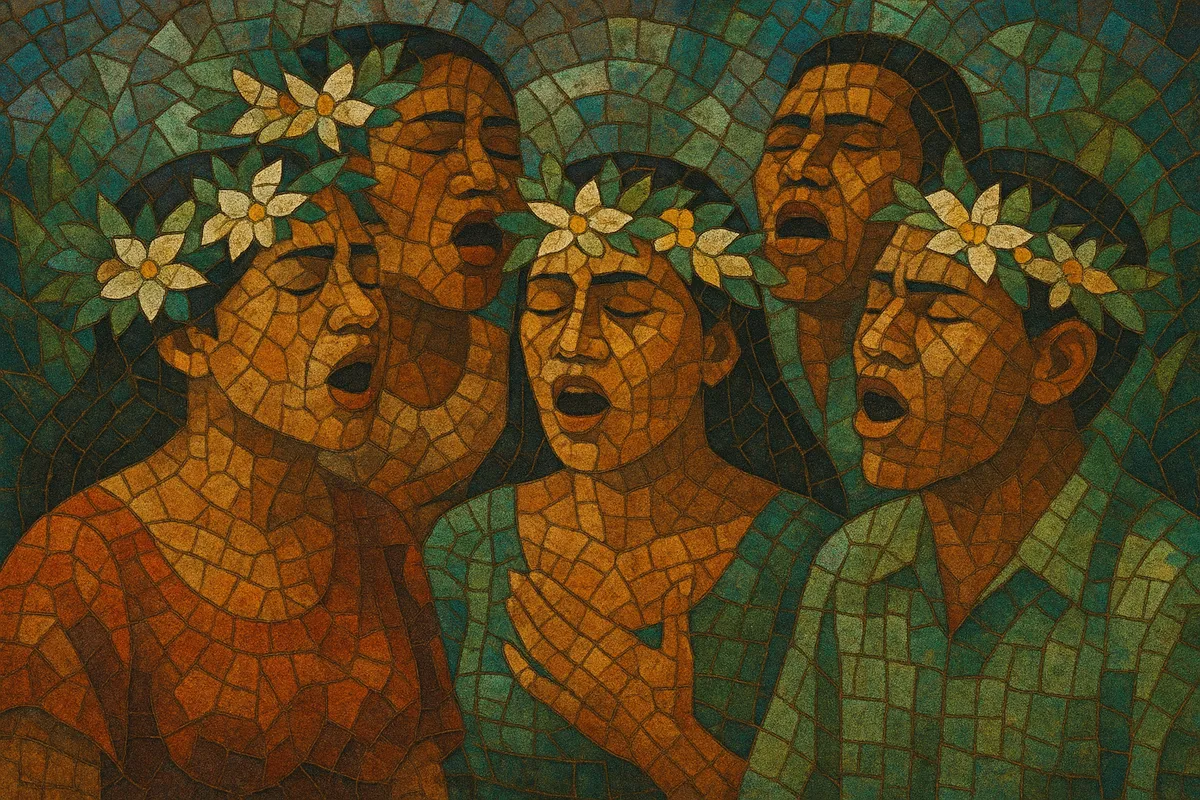
Himene tarava is a traditional a cappella choral form from Tahiti and the Society Islands in French Polynesia. The term “himene” derives from the English word “hymn,” introduced by Protestant missionaries in the 19th century, but tarava denotes a specifically Polynesian, highly ornamental and powerfully resonant polyphonic style.
Performed by village and church choirs, himene tarava features dense, multi-part harmonies that swell and recede in dramatic waves. Male and female sections interlock through antiphony, staggered entries, sustained pedal tones, and cascading inner parts. The effect is at once devotional and communal: a sonic tapestry of glissandi, tight voice-leading, vocables, and Tahitian-language poetry projected with remarkable volume and intensity.
The arrival of London Missionary Society Protestants at the turn of the 19th century introduced congregational hymn singing to Tahiti and neighboring Society Islands. Local communities rapidly adapted this new practice, blending Protestant hymnody with pre-contact Polynesian chant aesthetics and community-based performance. The result was the emergence of distinct Tahitian himene types—of which himene tarava is the most monumental and theatrically layered.
Himene tarava grew as a communal tradition: village and church choirs prepared repertoire for religious services, celebrations, and later for cultural festivals (notably Heiva i Tahiti). Its sonic identity rests on powerful a cappella projection, dense harmony, and dynamic swells. Gendered sections often answer each other antiphonally, with leaders cueing pitch and structure while the ensemble builds richly voiced chords and sustained drones.
Throughout the 20th century, broadcasters, ethnographers, and labels (e.g., Ocora Radio France) recorded Tahitian choirs, helping to document regional variants (Tarava Tahiti, Tarava Raromatai/Leeward Islands, Tarava Tuhaa Pae/Austral Islands). Festival competitions and church events maintained transmission, refining choral blend, tuning practices, and repertory.
Today himene tarava remains a living emblem of Maʻohi identity. Choirs continue to perform in churches and at cultural festivals, while recordings, school programs, and community rehearsals sustain intergenerational continuity. The genre is recognized internationally as a distinctive Polynesian choral art that fuses Christian devotional frameworks with indigenous musical sensibilities.

